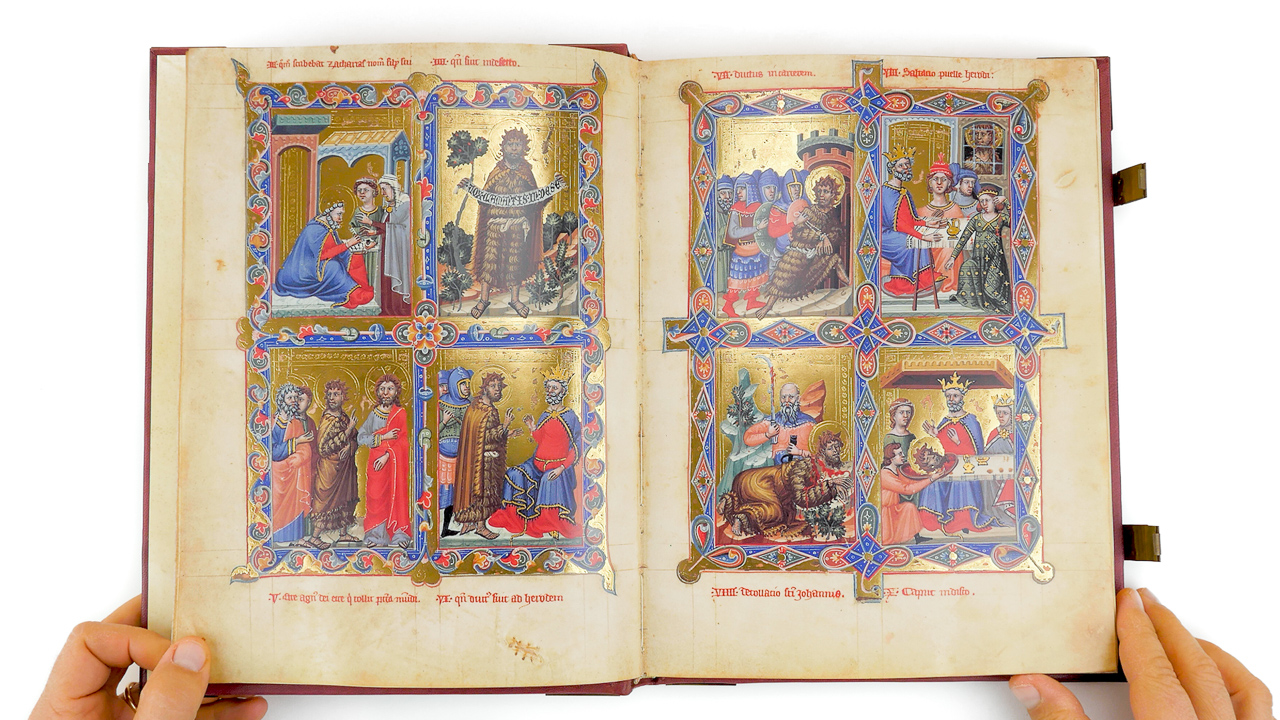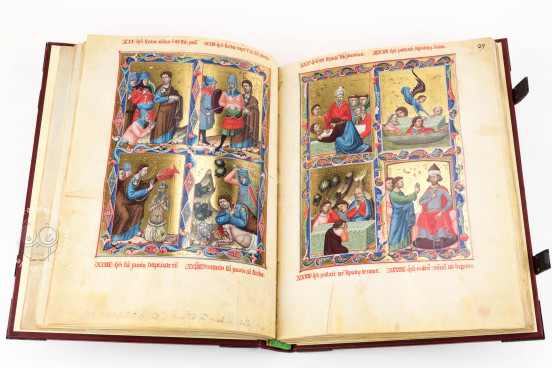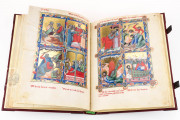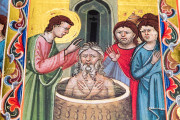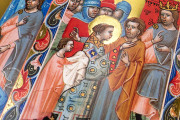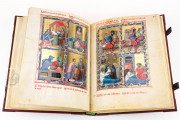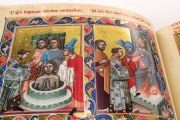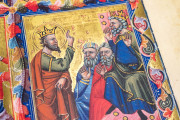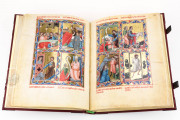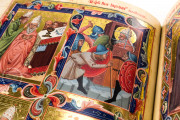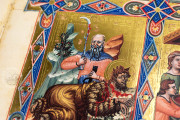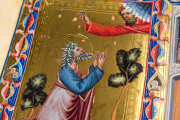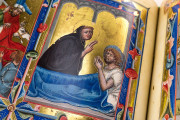The Hungarian Angevin Legendary is a picture book of Christian saints' lives, as interesting for its content as it is admired for its high artistic quality. The manuscript was created around 1330-1345, perhaps for Charles Robert of Anjou, King of Hungary, by a group of illuminators working in the Bolognese style either in Bologna or Hungary or both. The book does not survive in its entirety: its extant pages and fragments feature 549 individual scenes arranged four to a page.
The surviving portions of the manuscript tell the stories of holy Christians, beginning with Jesus. Most of the scenes are based on the Golden Legend, a widely read thirteenth-century compilation of saints' lives, and many were selected for their importance to the Hungarian house of Anjou.
Gold Grounds and Brilliant Color
The paintings of the Hungarian Angevin Legendary are brilliantly colored scenes of religious conversion, pious acts, tests of faith, brutal martyrdoms, and other episodes in the lives of saints, as well as representations of miracles affected by the adoration of saints. The scenes are arranged into fours on tooled gold leaf grounds, with the scenes separated by painted frames comprising decorative motifs characteristic of Bolognese painting.
A Pictorial Litany
Although the beginning of the manuscript is lost, it probably opened—as it does now—with the life of Christ. After that, the manuscript continued in the manner of a litany by categories of saints, illustrating the lives of the Virgin Mary, the apostles, the evangelists, male martyr saints, male confessor saints—including Saints Benedict, Anthony, Bernard, Dominic, and Francis associated with holy orders—, and female saints.
The manuscript's pages were painted on one side only, with the openings alternating between a facing pair of full-page miniatures with short explanatory captions and a pair of blank pages. The Passion of Christ probably occupied at least sixteen full-page miniatures. Some saints are given as few as two scenes, just half of a full-page miniature, as is the case for Saints Luke and Stephen (Vatican, fol. 44v), even though they are saints of high status: one is an evangelist and the other the first martyr.
Focus on Local Saints
Several saints of local interest to a Hungarian patron are accorded a place in the book, including Saint Emeric (d. 1031; Vatican, fols. 78r-79v) and Ladislas I (1040-1095), King of Hungary, whose legend unfolds in twenty-four scenes (fols. 80r-85v). The story of the Venetian Saint Gerard (d. 1046), who served as the first bishop of Csanád, is told in eight scenes (fols. 68r-69v).
Numbered Captions
The pages of the Vatican codex include numbered Latin captions for the individual scenes. These are written in red in the upper and lower margins in a workaday Gothic Textualis script. Usually, the final label of each sequence is named the last (ultima), but this label is sometimes applied to another scene. The burial of Mary Magdalen (Vatican, fol. 103v), for example, is labeled ultima but is followed by four scenes of posthumous miracles.
Divided among Six Repositories
The lion's share of the surviving portions of the legendary survives in a codex bound in the eighteenth century now in the Biblioteca Apostolica Vaticana, having been donated in 1757 to the Museo Christiano by Pope Benedict XIV. About a fifth of the surviving leaves (all trimmed) and smaller fragments are in the Morgan Library & Museum, most acquired in 1909 by J. Pierpont Morgan (1837-1913) as an album of cuttings, with two pages added subsequently. The remaining eight pages (all trimmed) are in four different collections.
We have 1 facsimile edition of the manuscript "Hungarian Angevin Legendary": Heiligenleben. Ungarisches Legendarium facsimile edition, published by Belser Verlag, 1990
Request Info / Price
